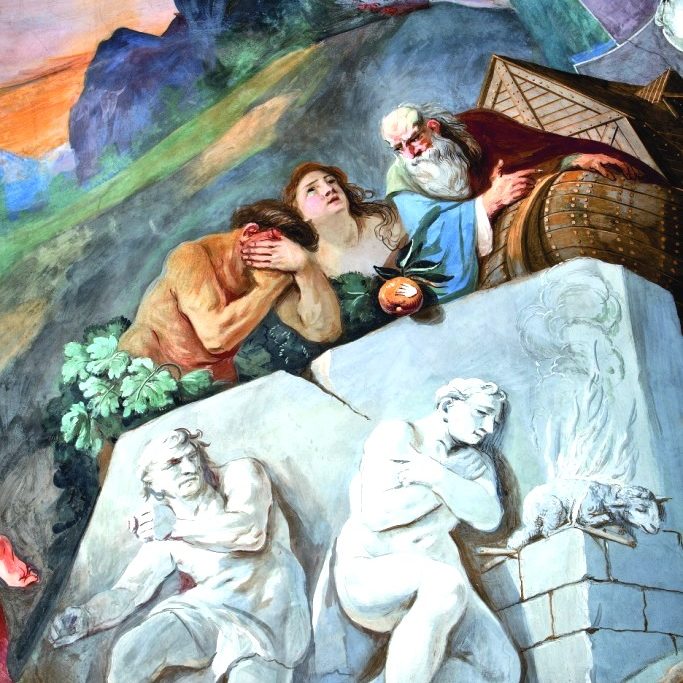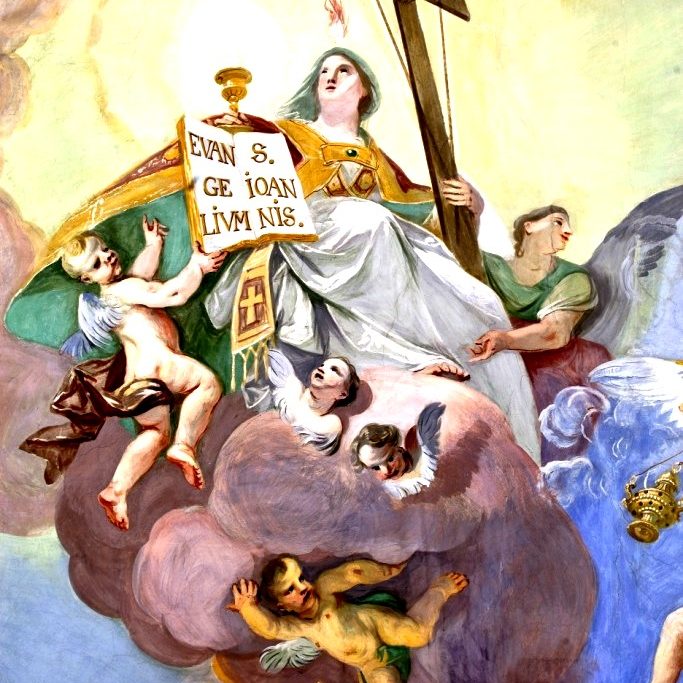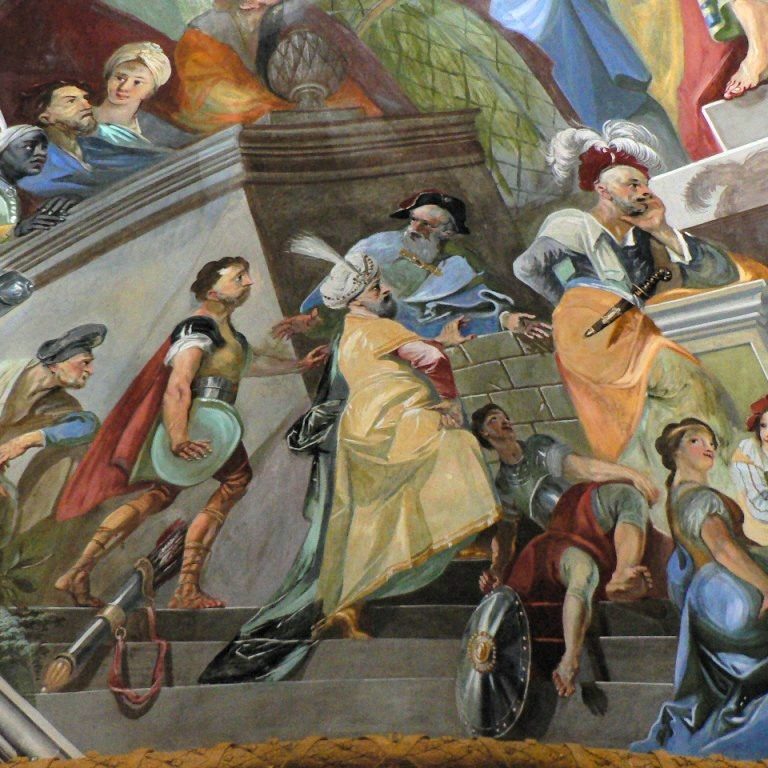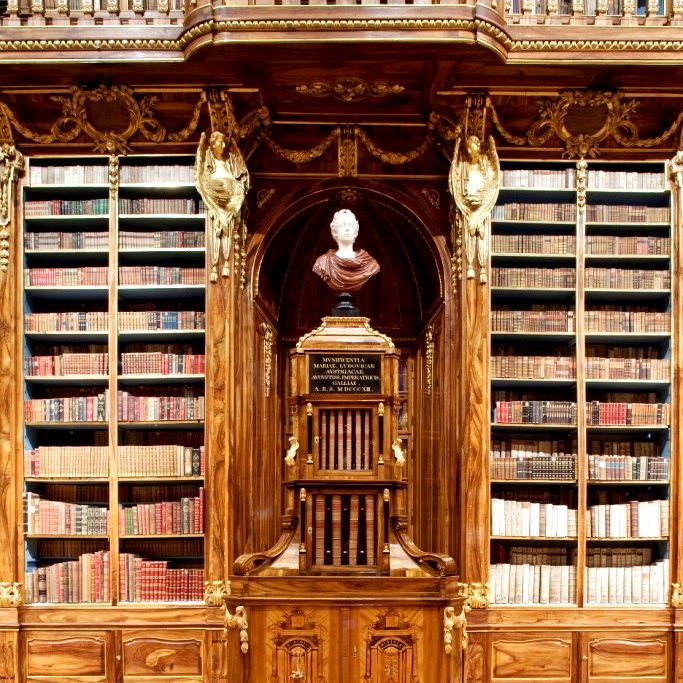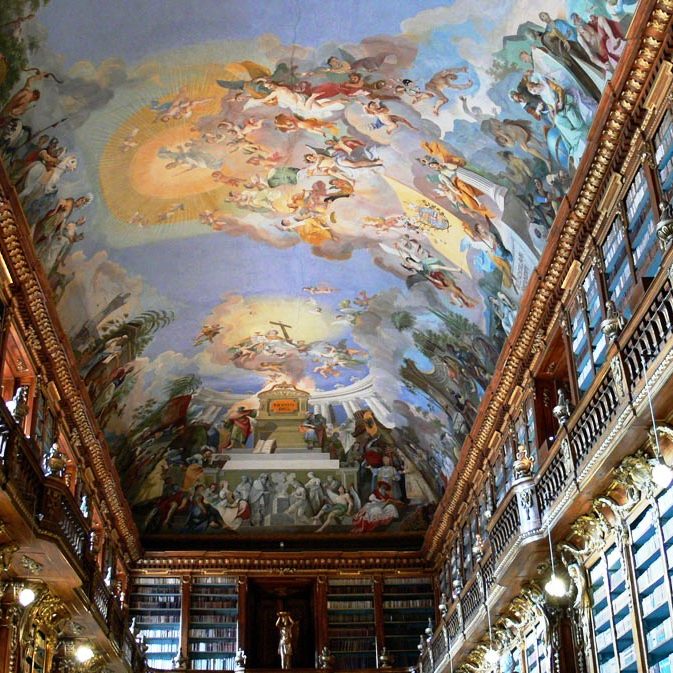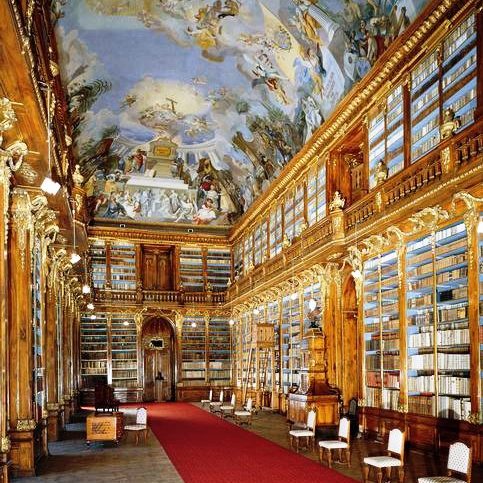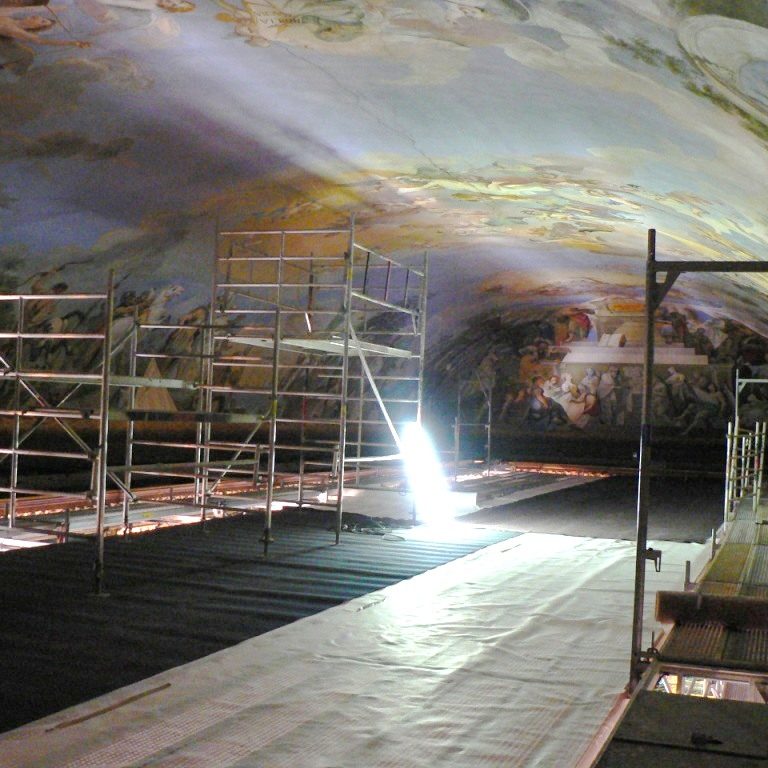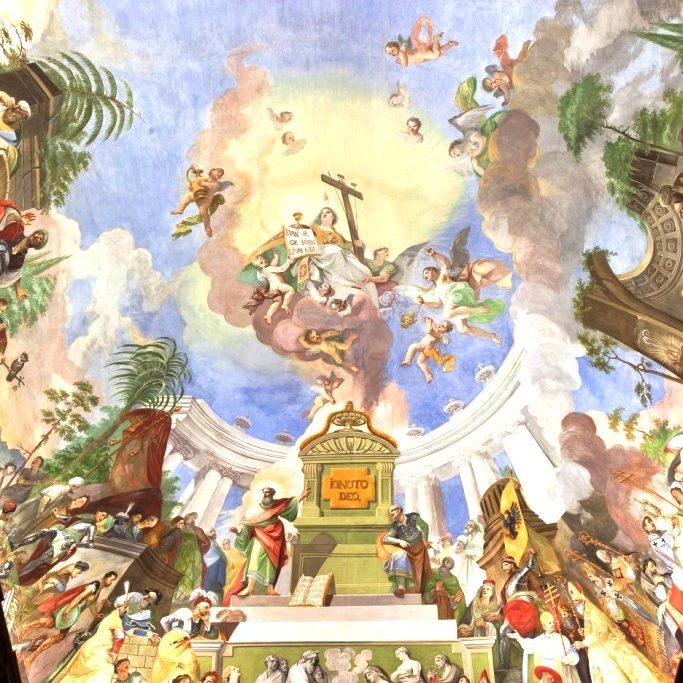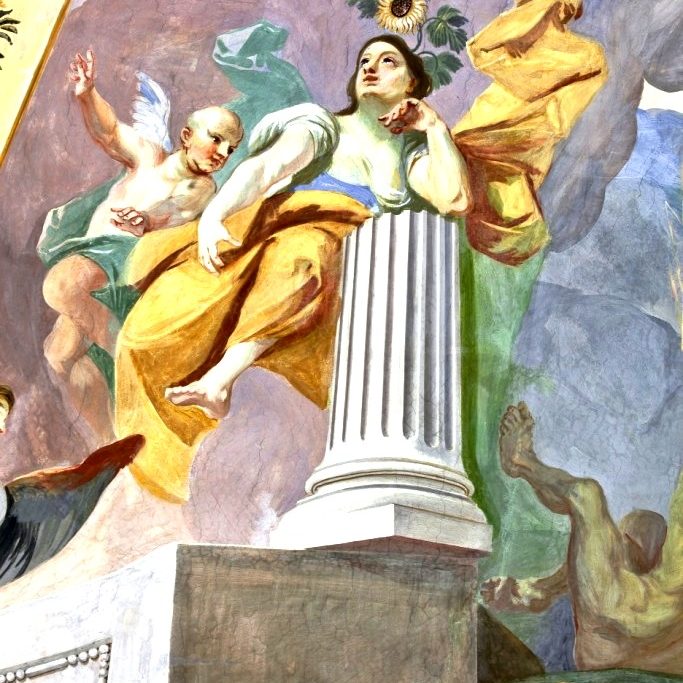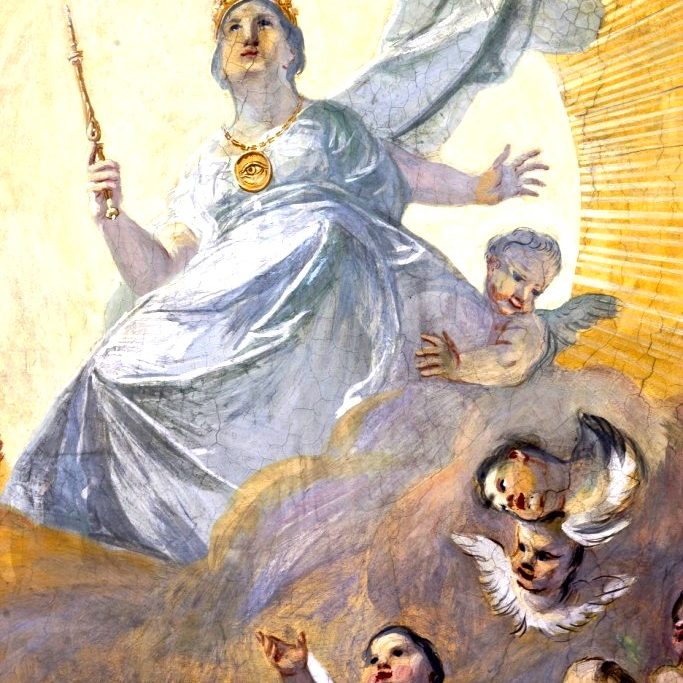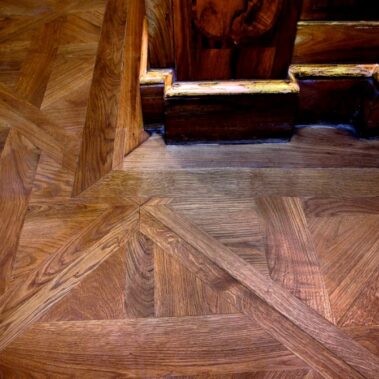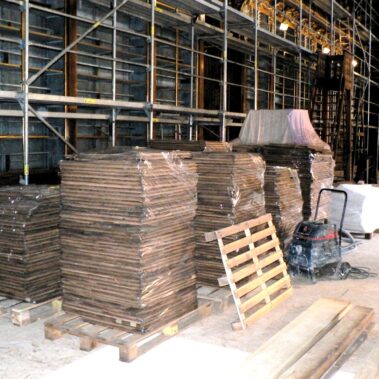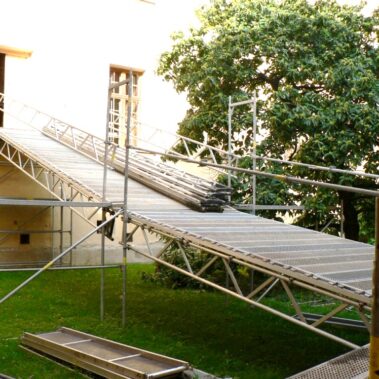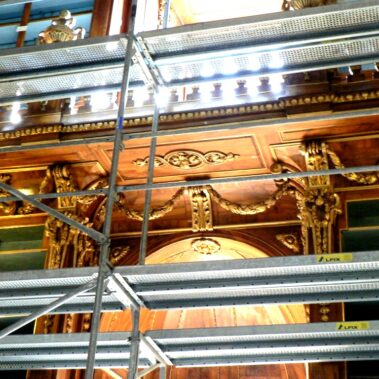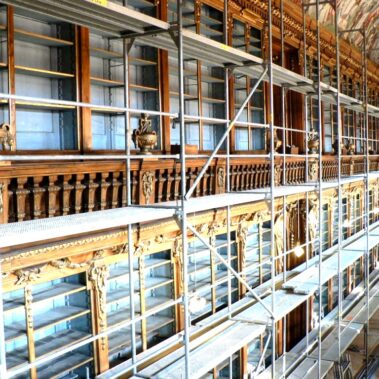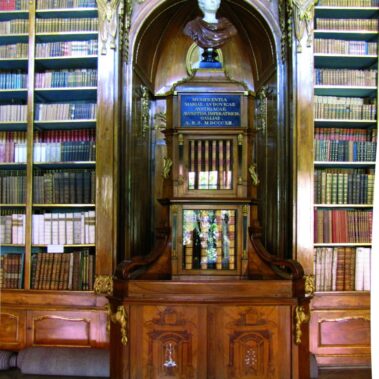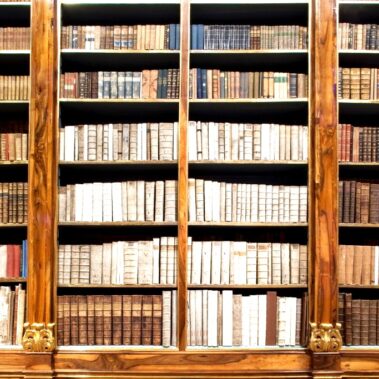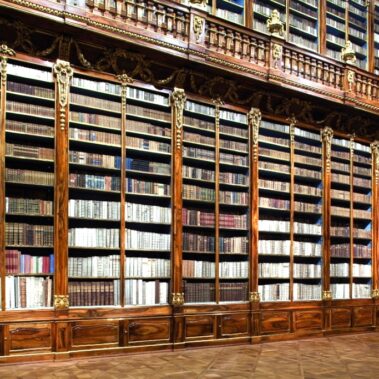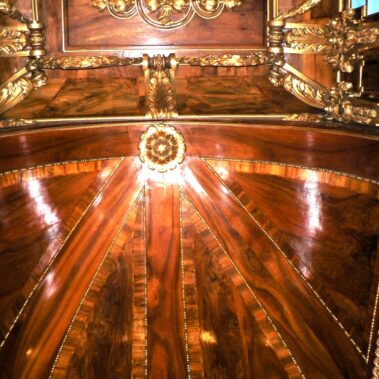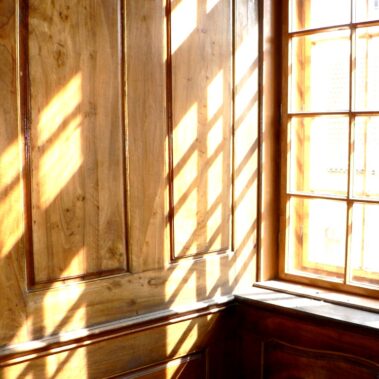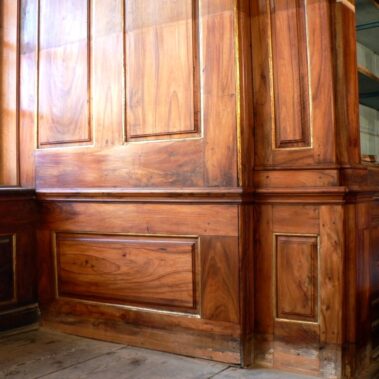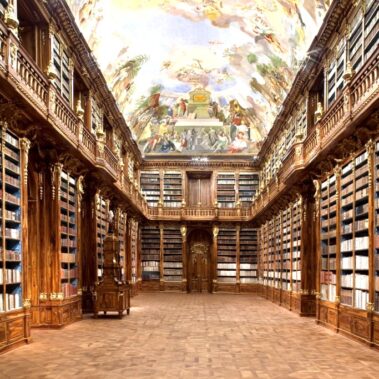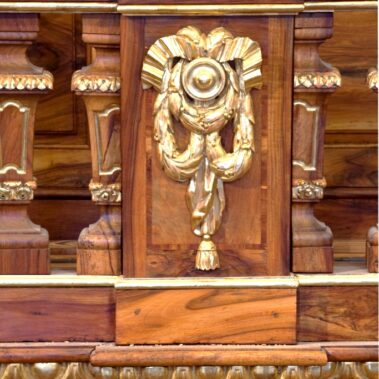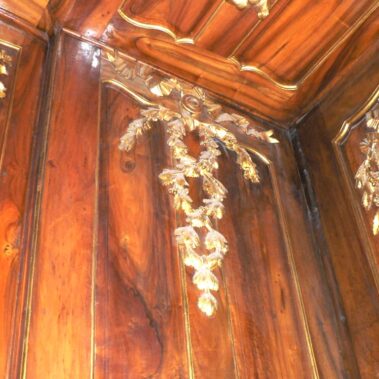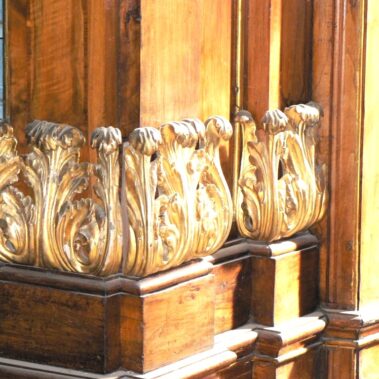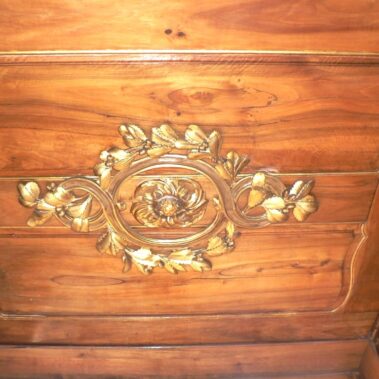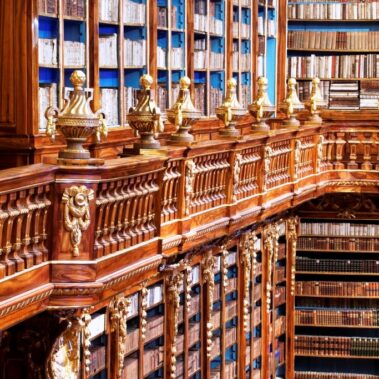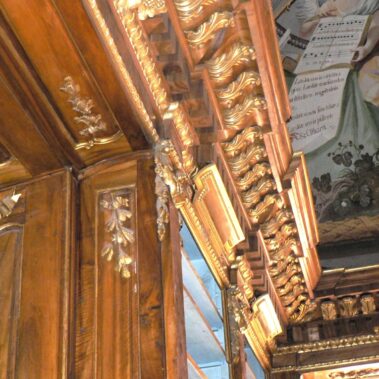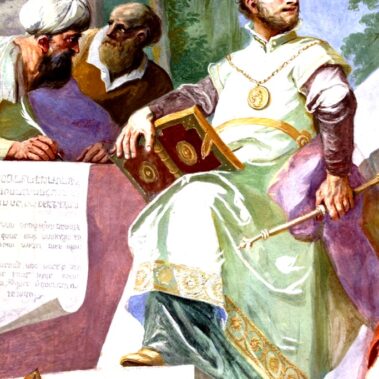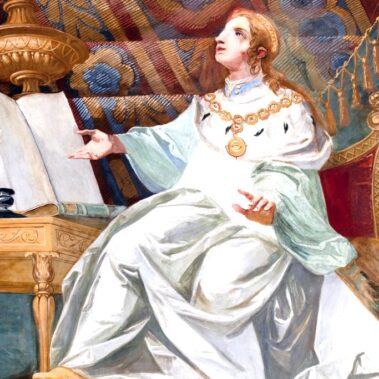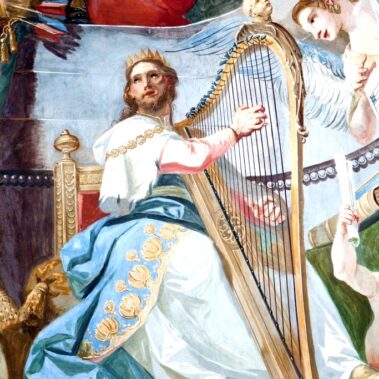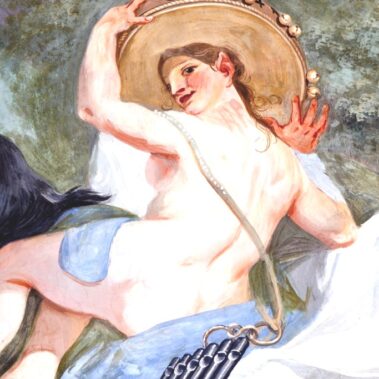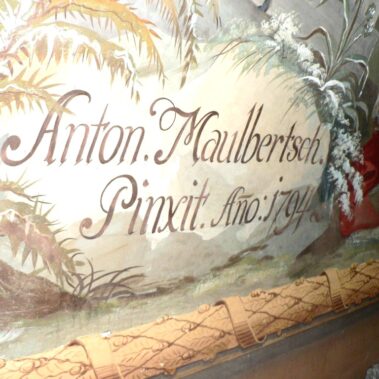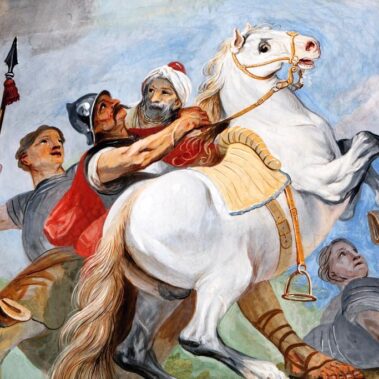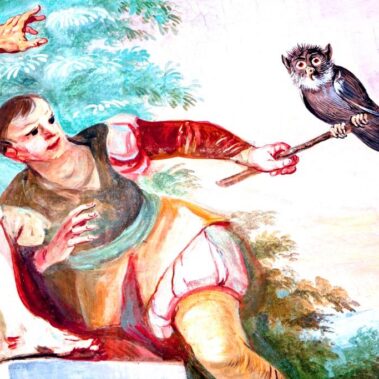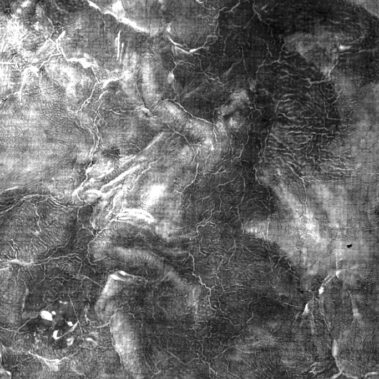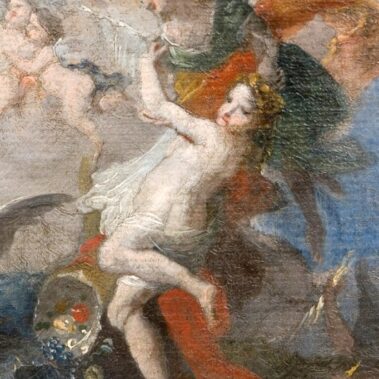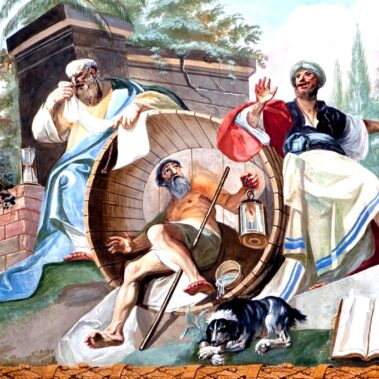The Philosophical Hall, Strahov Monastery, Prague - Strahov, Czech Republic
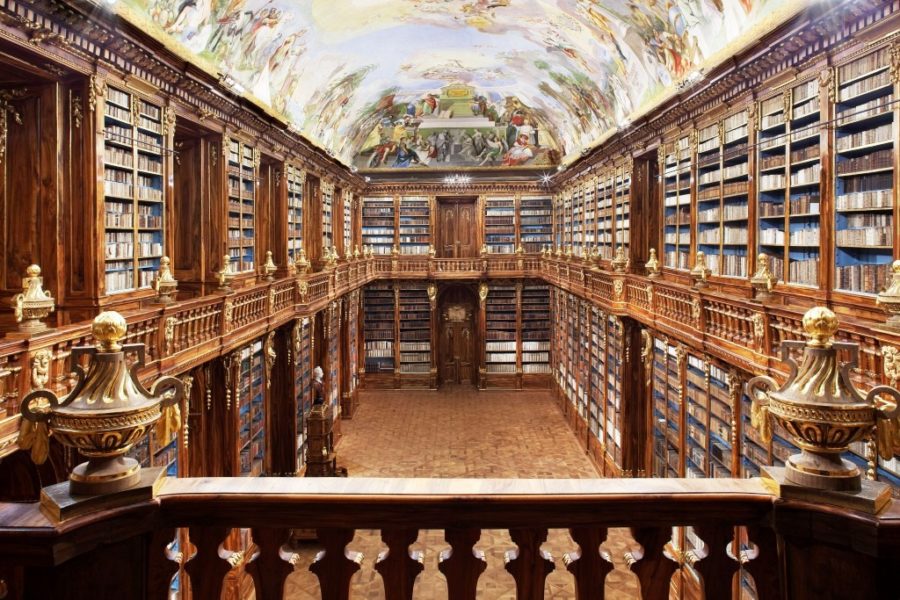
| Address: | Strahovská klášter č. p. 132, Praha 1 |
|---|---|
| Description of work: | Survey of the painting on the ceiling
Restoration of the painting on the ceiling Restoration of wooden floors |
| Contractor: | GEMA ART GROUP a.s |
| Investor: | The Royal Canonry of the Premonstratensian Order, Strahov, Prague |
| Implementation: | 07/2009-12/2010 |
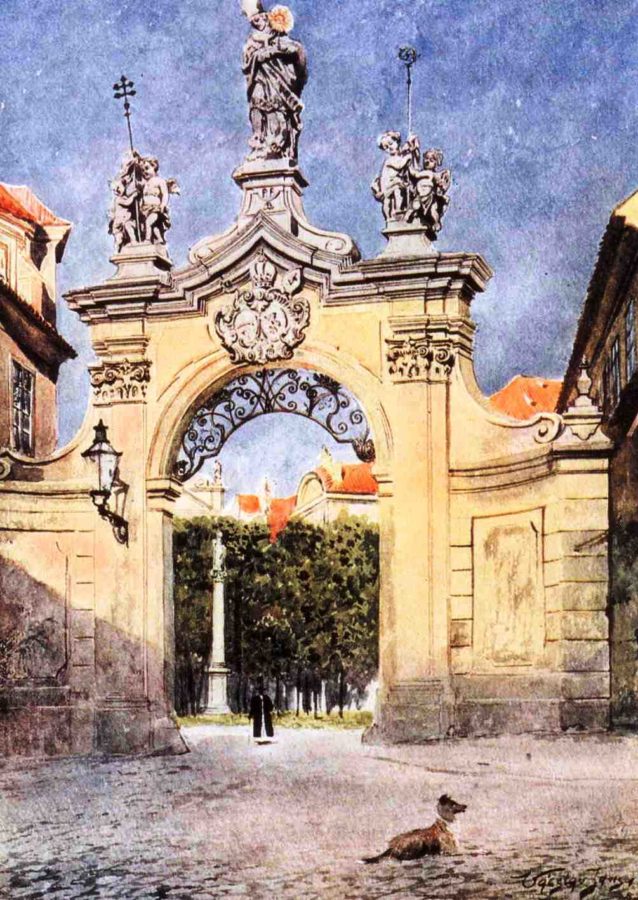
The Monastery of the Premonstratensian Order at Strahov in Prague has a history reaching back to the 12th century and is a listed National Cultural Monument of the Czech Republic. The monastery was founded during the reign of King Vladislav II on the impetus of the Bishop of Olomouc Jindřich Zdík.
The monastery acquired its current Baroque appearance in the years between 1671 and 1674, when an extensive rebuilding was carried out according to design by the architect Giovanni Domenico Orsi. Additional alterations were carried out in 1742 by the architect-builder Anselmo Lurago.
The beginnings of today’s library of the Strahov monastery can be placed in the era of Giovanni Domenico Orsi’s rebuilding work. The Theological Hall was then erected with the purpose of housing the monastery’s book collection. The existing collection was enlarged by Abbott Jan Meyer, who purchased in 1780 around 17 thousand new volumes; subsequently, new storage space for them was needed. The monastery obtained an official building permit in 1782 and building work was completed in 1785. The two halls were connected by a corridor. The interior of the Strahov library was furnished with wooden bookcases made in the 1770s, which were brought here from the abolished monastery in Louka near Znojmo. Visitors to the Philosophical Hall are immediately drawn to the painting on its ceiling titled “The Spiritual Progress of Mankind” by the artist Franz Anton Maulbertsch, who was assisted by his pupil Martin Michl. The artist worked on the painting from April till October 1794. The subject is an almost exact copy of the wall painting in the library hall of the former monastery in Louka near Znojmo. Once the painting was completed a detailed guide to it, titled “The Description”, was published, with an extensive commentary on the artwork. The Abbott of the Strahov monastery, Jan Meyer, is considered to be the author of the Latin version.
The book collection of the Philosophical Hall library contains works on history, theology, poetry and liturgical texts. The Theological Hall houses a collection of various editions of the Bible.
The book collections of the older Theological Hall and the later Philosophical Hall of the Premonstratensian Order monastery at Strahov number more than two hundred thousand volumes. The larger Philosophical Hall was the subject of the complete restoration carried out by the experts of the company GEMA ART GROUP a. s. The interior of the hall is dominated by the ceiling painting “The Spiritual Progress of Mankind” from 1794, which constituted the pivotal portion of the expert restoration. The restoration work was preceded by research, when samples were taken for chemical and technological analysis with the aim of establishing the painting’s stratigraphy and the materials used. A surface examination by ultraviolet and infrared light was also carried out.
No less an important part of the restoration remit was the preservation of all wooden parts of the Philosophical Hall, such as the bookcases, the wooden gallery with its railing and parquet flooring.
Wooden elements:
The space of the Philosophical Hall of the Strahov library is divided into two levels. The lower level has wood panelled alcoves and wooden bookcases, the upper gallery level, accessed by a staircase, contains wooden book shelves. The library furnishings date back to the second half of the 18th century; the window frames and casements on the east side of the library are from the 1970s.
To start with, a stability evaluation of the library premises was carried out, especially in the area of the gallery deflection. The whole structure was found to be stable. The wooden parts are mainly made from hard walnut, oak and elm wood. Parts which exhibited more serious damage were made from soft wood. The timber was affected by woodworm and some parts of the marquetry were missing. Cracks on the surface of the wood were caused by variations in temperature and dampness. There were also signs of mechanical damage. The varnished surfaces of the marquetry had become opaque and tarnished under the influence of sunlight and were further degraded by more recent applications of a thick shellac coating.
After photo documentation and exact recording of positions, all parts, including the oak parquet flooring, were dismantled. The surfaces had to be first rid of dust deposits. The unsuitable varnish coating was removed mechanically and the surface then smoothed with sandpaper. The inappropriate blue tempera coating inside the bookcases was also removed, using steam and warm water.
Missing parts were replaced with identical copies, damaged areas were in-filled with inserts and small cracks were sealed. Loose parts of the marquetry were taken out, cleaned and re-attached. Areas affected by woodworm were given a hardening treatment. The surface was saturated with linseed oil and then coated with shellac polish, which was subsequently buffed and waxed. Missing shelf supports inside the bookcases were replaced.
Re-installation of the wooden parts, including the parquet flooring, in their original settings proved to be an exacting task. Unevenness of the floor between the wooden board base and the parquetry was in-filled with wood splinters and sawdust.
As part of the work, two wooden angels and eight half-figures of angels were also restored.
Gilded parts:
These are ornamental wood carvings in the shape of vegetative elements, ovoid and astragal shapes, foliage and festoons. The decorative gilded parts showed various degrees of damage, relating to their accessibility. The ornamentation placed out of reach was nearly pristine, whilst the gilding of the lower parts was almost rubbed away. Further degradation was caused by localized past retouching with bronze coating, rather then the original gold leaf. The experts carried out a complete restoration of the wood carvings and used gold leaf for the gilding.
Restoration of the ceiling painting “The Spiritual Progress of Mankind”:
The painting covers an area of 400 m². The surface was covered in thick dust and in places the ceiling had been damaged by seeping rain water. The incidence of the colour layer becoming detached was most frequent on the west side of the hall. Pulverization of the painting had also occurred. During the previous repairs repainting was carried out but without the necessary sealing. The ceiling was affected by cracks, the deepest ones going through the centre of the painting.
First of all the surface dirt was removed. Where the secondary overpainting interfered with the overall appearance of the artwork, it was carefully removed. The loose portion of both the colour and the underlying layer were fixed and an in-depth strengthening of the plaster was carried out. The area of the extensive central crack was in-filled, sealed with lime grout and overall retouched. The whole surface of the painting was then fixed.
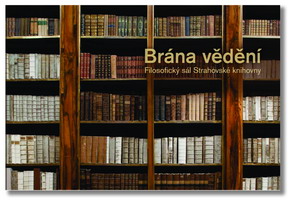
Nakladatelství GEMA ART vydalo ve spolupráci s Královskou kanonií premonstrátů na Strahově odbornou monografií zabývající se stavební historii Filosofického sálu. Kniha vyšla u příležitosti slavnostního znovuotevření Filosofického sálu dne 9. 12. 2010. Publikaci Brána vědění v české a anglické verzi lze zakoupit on line prostřednictvím webových stránek Galerie Gema:
http://www.gemagalerie.cz/cs/publikace/23-brana-vedeni-filosoficky-sal-strahovske-knihovny
Otevírací doba do historických sálů Strahovské knihovny:
Denně 9:00 – 17:00
Vstupné je 80 Kč.
